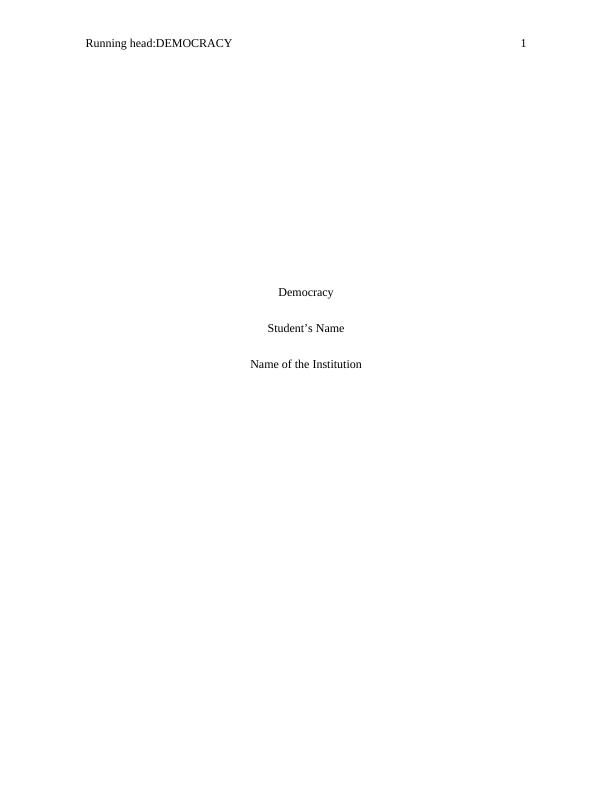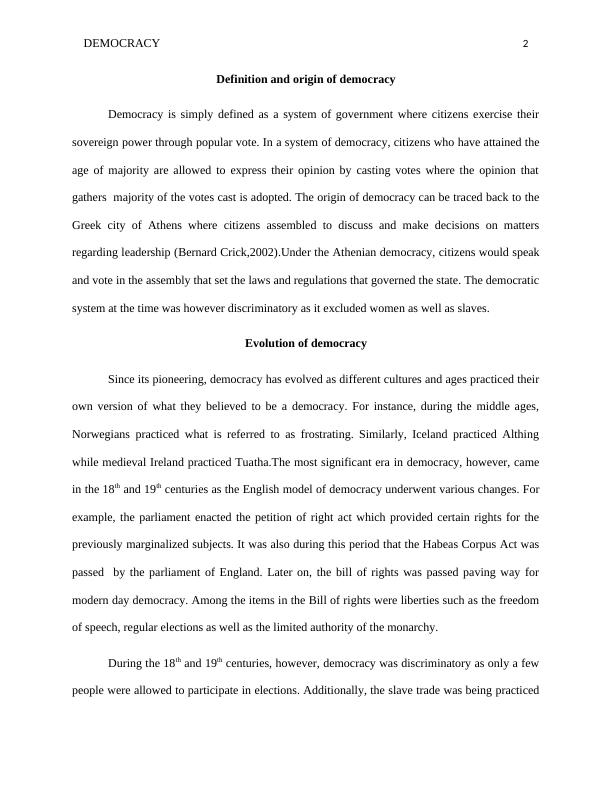Democracy
SSC109e Examination for Introduction to Social Sciences in July Semester 2017 at Singapore University of Social Sciences (SUSS)
6 Pages1192 Words163 Views
Added on 2023-06-08
About This Document
This article discusses the definition, origin, evolution and types of democracy. It explains direct and representative democracy, parliamentary and presidential system. It also highlights the challenges facing democracy in different parts of the world.
Democracy
SSC109e Examination for Introduction to Social Sciences in July Semester 2017 at Singapore University of Social Sciences (SUSS)
Added on 2023-06-08
ShareRelated Documents
End of preview
Want to access all the pages? Upload your documents or become a member.
Assignment | Reconstruction or the civil rights
|9
|1985
|24
American History: Reconstruction and Changes in Society
|4
|766
|123
Strategic Outlook of Afghanistan: Political Structure, Economy, and Key Challenges
|7
|1070
|411
The Gilded Age Discussion 2022
|4
|756
|17



